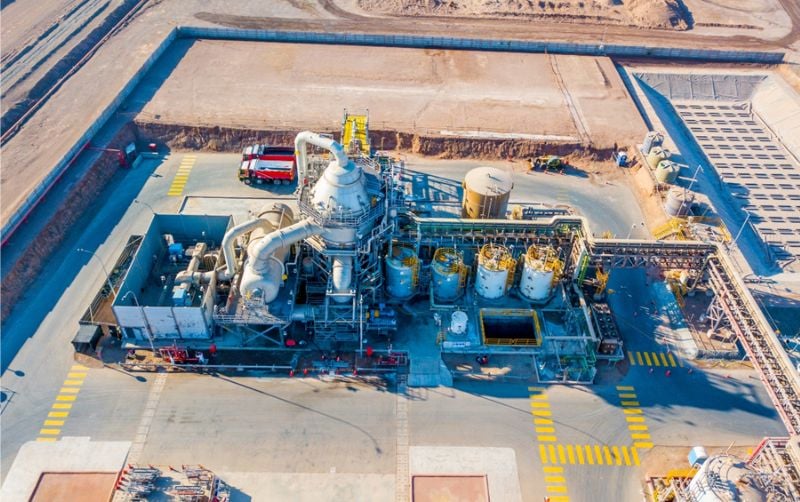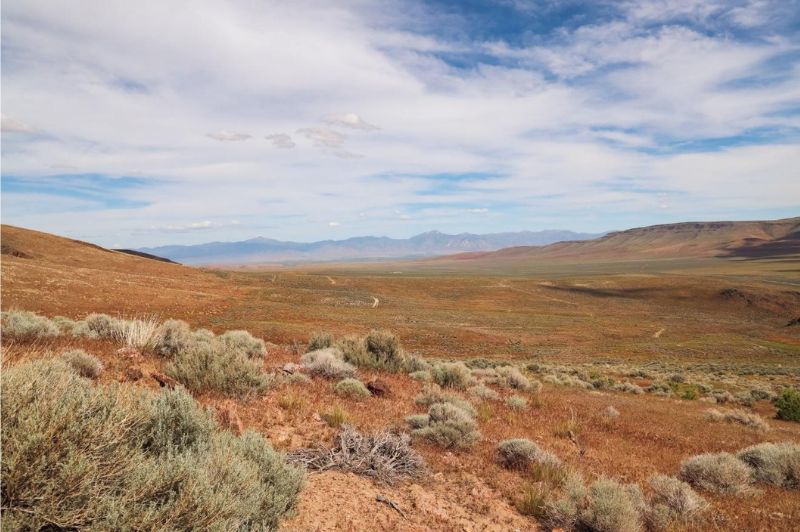Growing Lithium Needs Causing International Tension
Chile nationalizes its lithium production while the rest of the world depends on China to obtain the key element to current and future battery technologies.
You might think, as critical as lithium-ion batteries have become to our zero-emissions future, that the production and processing of lithium compounds was a buttoned-down and orderly supply chain. You would be wrong.
Lithium. Image used courtesy of SQM
Lithium is a highly reactive silvery-white metal produced as lithium hydroxide through open pit hard-rock mining of the mineral pegmatite or produced as lithium carbonate from evaporating brines brought up from beneath the earth’s surface. Hard rock mining makes Australia the world’s largest lithium supplier, followed by Chile, which produces lithium from the brines pumped under the expansive salt flats in its Salar de Atacama.
Open pit lithium mine in Australia. Image used courtesy of Calistemon, CC BY-SA 4.0, via Wikimedia Commons
Lithium Triangle
Argentina, Bolivia, and Chile make up what is called the "lithium triangle," and together, they hold more than half of the world’s proven lithium reserves. Chile is the only one of the three countries that have successfully exploited its lithium resources, with industry giants Chilean mining firm Sociedad Química y Minera de Chile (SQM), and U.S.-owned Albemarle, the world’s number 1 and 2 lithium producers (respectively) supplying electric vehicles (EV) manufacturers like Tesla, and EV battery suppliers like LG Energy Solutions.
Chile’s Lithium Plan
But it’s not that simple. On April 20 of this year, Chile's President Gabriel Boric said he would nationalize the country's lithium industry. The plan over time is to transfer control of lithium production from both SQM and Albemarle to a separate state-owned company. SQM’s contracts with the Chilean government are set to expire in 2030, while Albemarle’s will expire in 2043. Chile’s government has said that any further lithium contracts will be issued only as public-private partnerships under the control of the state-owned entity. The International Energy Agency has projected demand for lithium will grow more by 40-fold by 2040, and it’s clear that the Chilean government wants a piece of that action.
The Chilean government is also taking steps to encourage the development of a lithium battery manufacturing industry in Chile. In 2022, the government announced it would invest $1 billion in lithium over the next five years.
Lithium mining. Image used courtesy of Albemarle
Brines
The extraction of lithium from brines is a lengthy process. The salty mineral-rich brines are pumped into holding ponds where the sun evaporates the water and leaves behind a crystallized lithium-rich material. The lithium is separated from the other minerals, and the entire process can take up to 18 months. The whole process is highly water intensive, and extracting a ton of lithium can take as much as half a million gallons of water—in a region where water is scarce. Water shortages for agriculture and other activities have already begun affecting the local indigenous population in Chile.
U.S. Lithium Sources
These issues are not unique to South America. Some are replicating themselves in lithium extraction operations in Nevada. In this context, the lithium industry must find a way to balance the opportunities for increased lithium extraction and the environmentally suspect parts of the extraction process.
Australia and Chile are not the only sources of lithium. The U.S. ranks fifth in the list of proven reserves of the material, and Nevada is one of the country’s hotbeds for lithium exploration.
In Silver Peak, Nevada, Albemarle operates the only active lithium mine in the U.S., which has, since 1966, been producing lithium from brine extracted from the Clayton Valley basin. Benefitting from the recent Inflation Reduction Act, the company has announced plans to invest between $30 and $50 million to double production to about 10,000 tons per year by 2025.
Nevada has even more promises for lithium producers. Another company called Usha Resources Limited has a project in Nevada called the Jackpot Lake Lithium project located in Clark County, Nevada, about 22 miles northeast of Las Vegas. This mine is similar to Albemarle’s Silver Peak mine and will evaporate brines to obtain lithium resources.
Thacker Pass Lithium Project. Image courtesy of Lithium Americas
The largest known lithium deposit in the U.S. is at the Thacker Pass Lithium Project, which has been under development since 2007. The process used to extract lithium from the clay deposits present at Thacker Pass differs from the usual hard rock or brine methods. Large machinery is used to dig out the clay, which is then turned into a slurry. Sand and rock are separated from the slurry, which is then mixed with sulfuric acid that extracts the lithium metal. The mixture is then passed through a series of filters that removes the lithium, which can be further processed into lithium carbonate or hydroxide for use in batteries. The process is as water-intensive as brine extraction, requiring 500,000 gallons per ton of lithium.
The current plan is to operate Thacker Pass for 46 years producing approximately 80,000 tons of lithium annually—most of it destined for U.S. EV battery applications.
Direct Lithium Extraction
Another way to remove lithium from brines is direct lithium extraction (DLE), where the brine or lithium-bearing solution passes through a series of filters to extract the lithium, leaving behind unwanted waste materials. Compared to extraction from evaporation ponds, this method reportedly saves 98 percent of the water required. In addition to filtering traditional brines, work is underway to extract lithium from the high-temperature steam used in geothermal facilities or the lithium found in the brines used in bromine production.
The U.S. also has hard-rock lithium resources, most notably the 800-acre Kings Mountain site in North Carolina. This is one of the world’s richest lithium-bearing spodumene ore deposits and is the headquarters for Albemarle’s lithium technical center. The mine was operated from the 1940s through the 1980s as an open pit mine and was one of the world’s leading sources of lithium before lower-cost options in Australia and South America became available. With the current price for lithium and the need for domestic sources, Albemarle is said to be examining the case for reopening the mine.
Global Politics
Finding lithium has become a major economic and security concern, and China has been particularly successful. China has locked in 55 percent of the world’s lithium supply, including 97 percent of Australia’s total lithium exports. Chinese companies are major investors in lithium projects worldwide, including the U.S. and Canada.
Just mining lithium isn’t the end of the game. The metal ores must be refined into battery-grade lithium carbonate and lithium hydroxide materials. Currently, Chinese companies have a monopoly, refining more than two-thirds of the lithium used in batteries.
Refining the lithium ore into valuable battery-grade materials is of growing interest to countries like Australia and Chile for economic reasons and a country like the U.S. to maintain its security and to try to build a domestic EV industry that is not dependent upon materials coming directly from China. But all of this takes time, and while the price of lithium more than tripled in 2022-2023, they have plunged more than 70 percent so far this year.
Such volatility makes it difficult to obtain the necessary funding to open new mines and build lithium refining facilities. As critical as lithium is now and in the future, the world needs a better grip on how it will be produced and refined. If we don’t, our ability to tackle climate change through the electrification of our transportation systems will be severely compromised.










